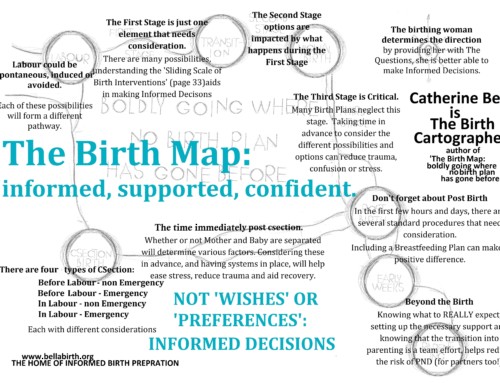 C-sections have been making the news recently as more research sets out to better understand long-term impacts of the delivery method given the rather dramatic rise in their use. Previous research has found increased risks for a variety of ailments, including asthma, diabetes, gastrointestinal disease
C-sections have been making the news recently as more research sets out to better understand long-term impacts of the delivery method given the rather dramatic rise in their use. Previous research has found increased risks for a variety of ailments, including asthma, diabetes, gastrointestinal disease
Although heritability has been found to be important for both ASDs and ADHD, there is also significant evidence that environmental factors play a role in their development[4]; indeed, an interactional model in which genetic susceptibility and environmental factors combine to increase risk has been proposed for both disorders[5]. The research herein is not new research, but rather a systematic review and meta-analysis of the previous studies that have been done looking at birth method and either ASDs or ADHD.
The eligibility requirements included: 1) Data from a cohort, case-control, or cross-sectional design, 2) Odds or hazard ratio for either ASDs or ADHD by method of delivery (vaginal versus c-section), and 3) adjustment for potential confounds which included, for example, age at delivery for ASDs and smoking during pregnancy for ADHD) OR the use of siblings as the control group. All studies that were found to meet the criteria were then analyses systematically for quality and bias, leaving a total of 25 papers total, 21 of which were examining ASDs as the outcome and only 4 of which examined ADHD.
For ASDs, there were nearly 1.4 million participants included over the 21 studies. When unadjusted odds ratios were calculated, there was a 36% increased risk for an ASD by c-section than by vaginal delivery. When confounds were included (thus providing an adjusted odds ratio), this dropped to 23%, but remained significant. Notably, when only sibling comparisons were made (i.e., one sibling has autism and the other does not) there were 1,441 participants and the increased risk by delivery mode was 35%. When the type of c-section was a factor (elective versus emergency), there was a difference, with an elective c-section resulting in a 14% increased risk whereas an emergency c-section was found to result in a 26% increased risk (both were significant and based on approximately 400,000 participants). Finally, when cohort data was used instead of case controls or matched controls, the effect was less (14% increased risk versus 23%) and when survey data was used instead of population-based data, the effects were much larger (173% increased risk versus 14%, though there were only 545 cases in the interview data).
For ADHD as the primary outcome of interest, two of the studies provided an unadjusted estimate and two provided adjusted estimates. The adjusted estimates provided a pooled odds-ratio of 7% increased risk which was not significant. Furthermore, both of these studies were matched case-control studies using population-level data.
As a take-home, the data did suggest an independent role for mode of delivery in increasing the risk for ASDs, but not ADHD (though the sample was so small, it was nearly impossible to determine anything on ADHD with any certainty). During the systematic review portion, the studies were found to have low to moderate bias (a good thing as some can have high bias and low is as low as they go, there is no “no bias” group). Based on these analysis and the prevalence of ASDs, the authors figure that c-sections may account for 5% of ASD cases. However, far more research is needed and many of the factors of influence discovered herein (e.g., emergency versus elective c-section, sibling data versus non-sibling data) should be taken into consideration when designing future studies.
What does this mean for women who have had c-sections or will have them? Can we say if the relationship is causal or not? For that, let’s turn to the Q&A section to help us tease apart the details of this meta-analysis.
Are the authors claiming that the relationship between c-sections and risk for ASDs is definitely causal then?
Nope. In fact, the authors are very clear to point out that we do not have conclusive evidence to support a definite causal conclusion. Indeed, it is quite possible that the indications for a c-section (especially as the emergency c-section presented with a higher risk than planned c-section) are indicative of the increased risk for ASDs and thus the c-section itself is not cause for increased risk (what is known as a third variable explanation in statistical terms, or confounding by indication in medical terminology). In this case, underlying mechanisms would result in both c-sections and ASDs. However, right now there is no evidence to support either a causal or third variable explanation.
If it is causal, how would it even be possible for c-sections to increase neurological disorders such as ASDs or ADHD?
There are two likely possibilities. First, animal models have found that c-sections result in specific neurological changes, such as the dopamine response in the brain[6] and changing the development of neurons in the prefrontal cortex and hippocampus[7]. Both of these changes may influence the development of specific neurological disorders. Second, there are differences in microbes and intestinal gut flora between vaginal and c-section births[8]. With the growing evidence of a strong link between gut flora and behavioural and social development (via influences on the neurological system), it would be no surprise to see any number of disorders influenced by anything that can disrupt the intestinal microbiota.
Why did the sibling analysis show a greater effect than the adjusted analysis without siblings? Wouldn’t siblings offer a more stringent control?
Typically, sibling analysis is the best that we can get as it provides the best form of control for parenting and demographic variables. In this case, it would mean we should take the 35% increased risk over the 23% found in the adjusted odds ratio analysis (which falls to 19% – still significant – when the siblings are removed from all analyses). Is this the right course of actions? Well, first one must note that the sibling studies were all conducted approximately 20 years ago and although there isn’t data on the emergency versus elective status, trending data on c-sections could mean there were more emergency c-sections over elective and this is a confound in the risk assessment.
However, it is also possible that this reflects the interactional model of risk assessment. As mentioned at the start, there is often a genetic component to ASDs as well as an interaction between the genetic and environmental influences. In the case of the sibling data, we may be getting a better look at this interaction effect; that is, these children have a known genetic risk and it is possible the delivery mode interacts with this genetic risk to provide an even greater risk of ASD diagnosis. On the other hand, the adjusted odds ratio provides us with data for those of us without the high genetic risk factors (or at least, known high genetic risk factors) known to influence families in which ASDs are present. There are likely still genetic influences, however their strength would be unknown (though likely less than in families where a history is known). The two differences may thus reflect the known differences between genetic risk, showing us that environmental risks play a role regardless, but they interact to result in an even greater risk when genetic risk is strong.
Why would emergency c-sections result in higher risks than elective? Isn’t there at least a trial of labour during emergency c-sections?
This is one of the more fascinating findings, in my opinion, and one with many possibilities. If a microbiota explanation fits for a causal effect of c-sections on ASD risk, one would think the trial of labour would actually decrease the risk as there is some exposure to the microbes during the vaginal trial of labour. As previously mentioned in the causal discussion, this may be a reflection of the “confounding by indication” which means that a third variable – namely, some underlying indication of ASDs – results in the need for an emergency c-section and the resulting diagnosis of an ASD. This need confounding does not take place in elective c-sections.
Of course, it is still worth noting that even elective c-sections resulted in an increased risk, albeit lower than that of emergency c-sections. One factor that may influence these findings is that an elective c-section is more likely as a second c-section whereas an emergency c-section is more likely when there has not been a previous c-section and much of the data in these analyses does not include mention of sibling risk by type of c-section. If, as mentioned previously in the sibling data discussion, there is an interaction between genetic and environmental factors in increasing risk, a mother who has had a first emergency c-section with no diagnosis of ASD is likely at low genetic risk for ASDs. Thus, her subsequent elective c-section would be similarly low genetic risk and therefore the elective c-section would suggest the possible risk associated with the environmental factor alone. However, without such data, it is nearly impossible to say in any direction.
Notably, though, the analyses did not find that the risk differentials were significantly different from each other in these analyses. Thus, the differences between elective and emergency c-sections may differ by chance, despite being seemingly far apart (and you can often thank low numbers of one type for such discrepant findings), and really both reflect a real risk.
What about the effect of sex? Aren’t boys more likely to be diagnosed with ASDs? Would this impact findings?
The authors wanted to examine sex as a factor however, this was oddly not reported in most of the studies. Rather, sex by delivery mode was unreported. Only two studies provided unadjusted odds ratios for sex, neither of which was significant due to low numbers, but they found a greater effect for girls than boys (89% increased risk versus 18%). Again, though, these numbers are not ones that can be taken as accurate at all, so really sex is a factor that needs to be explored in further studies.
If c-sections really are risk factors (and not confounds), what can be done that would help families who have a c-section instead of just making them feel bad?
First of all, this research is not done with the intent of making anyone feel bad. The main goal of research like this is to discover relationships and then the mechanisms behind them so they can help reduce risks like this. These authors were very clear about the potential for a confounding effect and no one should be worried much about their individual circumstances though it does raise questions about the overuse of c-sections in our society. As such, the primary concern at the moment would be for practitioners to try and ensure that they use c-sections when necessary, but not for their own convenience.
For parents, they should keep on going as usual. The hope is that these findings will start more research into the relationship between c-sections and ASDs which will illuminate what is actually going on. If c-sections prove to be an independent risk factor, then finding out why is paramount so that other actions may help alleviate the risk. For example, there is now research into the use of exposing c-section babies to vaginal fluids to help increase the good bacteria they are exposed to and while this is in its infancy, it is this type of research that may help us make c-sections even safer.
In short, if families are feeling bad, they need to remember that this research is there to help families like theirs in the long-term. Not all research will help those who have experienced something that is later identified as a risk factor, but it is there to forward our knowledge and ability to help future families.
_______________________________
[1] Cho CE, Norman M. Cesarean section and development of the immune system in the offspring. American Journal of Obstetrics and Gynecology 2013; 208: 249-54. [2] Chudal R, Sourander A, Polo-Kantola P, Hinkka-Yli-Salomaki S, Lehti, V, et al. Perinatal factors and the risk of bipolar disorder in Finland. Journal of Affective Disorders 2014; 155: 75-80. [3] Curran EA, O’Neill SM, Cryan JF, Kenny LC, Dinan TG, Khashan AS, Kearney PM. Research review: birth by caesarean section and development of autism spectrum disorder and attention-deficit/hyperactivity disorder: a systematic review and meta-analysis. The Journal of Child Psychology and Psychiatry 2014 (ahead of print); doi:10.1111/jcpp.12351 [4] Guinchat V, Thorsen P, Laurent C, Cans C, Bodeau N, Cohen D. Pre-, peri- and neonatal risk factors for autism. Acta Obstetricia Gynecologica Scandinavica 2012; 91: 287-300. [5] Polanska K, Jurewicz J, Hanke W. Exposure to environmental and lifestyle factors and attention-deficit/hyperactivity disorder in children – a review of epidemiological studies. International Journal of Occupational Medicine 2012; 25: 330-55. [6] Boska P, El-Khordor, BF. Birth insult interacts with stress at adulthood to alter dopaminergic function in animal models: Possible implications for schizophrenia and other disorders. Neuroscience & Biobehavioral Reviews 2003; 27: 91-101. [7] Juarez I, Gratton A, Flores G. Ontogeny of altered dendritic morphology in the rat prefrontal cortex, hippocampus, and nucleus accumbens following Cesarean delivery and birth anoxia. Journal of comparative neurology 2008; 507: 1734-47. [8] Neu J, Rushing J. Cesarean versus vaginal delivery: long term infant outcomes and the hygiene hypothesis. Clinics in Perinatology 2011; 38: 321-31.






I would be curious if the hormonal state of the mother and child might be a contributor to the difference between emergency and elective cesarean. Also the speed with which the baby is given to the mother for skin to skin contact. I think it is an interesting research question whether disruption to the mother-baby pairing and bonding in the critical moments around birth is associated with a greater risk of ASD.
This is super interesting and surprising!
This speculation “one would think the trial of labour would actually decrease the risk as there is some exposure to the microbes during the vaginal trial of labour” made me question whether I understood the definition of “emergency” vs. “planned” in this article since in my case I don’t think my baby would have been exposed to these microbes during trial of my (induced) labour… (cervix only a fraction dilated and effaced) and yet I wouldn’t have characterized my C-section as “planned” either. At the time I had the surgery, it wasn’t as “urgent” as the term “emergency” implies (probably could have waited several more hours if needed), but it certainly wasn’t my plan when I came in to start the induction the day before. (Sidenote, an induction was also not my plan at the outset, but at almost 2 weeks overdue, I felt I had no choice at that point…)
I suppose there is quite a large range of circumstances and urgency in all ’emergency’ sections – and even planned ones.
Hi I was 40 when I had my son delivered under emergency c section because his cord was around his neck but when I asked pedatrician about oxygen levels to his brain she said it was ok. But he has behaviour problems with us & school sometimes & friends up 4 a asd assessment soon do u think the c section could off caused it. I hav two other children 18 & 23 they didn’t hav the behaviour problems my 5 year older has.
Do the studies look at whether there is a lower incidence of breastfeeding with c-section births (especially emergency ones) given that recovery time is longer and can impact on milk coming in? I would feel instinctively that a breastfed child who isn’t exposed to birth canal microbes would still have better gut flora than a formula fed child who was born vaginally. So looking just at birth methods without controlling for feeding might well explain some of these findings?